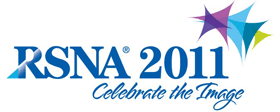
Abstract Archives of the RSNA, 2011
SSA16-09
CT Perfusion in Acute Stroke: Comparison of Different Algorithms and Validation of Ischemic Lesions
Scientific Formal (Paper) Presentations
Presented on November 27, 2011
Presented as part of SSA16: Neuroradiology (Acute Stroke)
Benjamin Abels, Presenter: Nothing to Disclose
Pablo J. Villablanca MD, Abstract Co-Author: Nothing to Disclose
Bernd F. Tomandl MD, Abstract Co-Author: Nothing to Disclose
Michael Uder MD, Abstract Co-Author: Nothing to Disclose
Michael Marcus Lell MD, Abstract Co-Author: Research grant, Siemens AG
Speakers Bureau, Siemens AG
Research grant, Bayer AG
Speakers Bureau, Bayer AG
Research Consultant, Bracco Group
CT Perfusion (CTP) is a well-established modality in stroke imaging. Allowing for ischemic core/penumbra differentiation, CTP may improve risk-benefit stratification and patient selection for reperfusion therapy in a similar manner as MRI. Yet, it has been shown that CTP results may vary substantially among different algorithms/software and there is little evidence of the accuracy of core/penumbra lesions indicated by CTP as compared to final infarct size. Therefore, we performed a quantitative comparison of CTP measurements obtained by different algorithms and validated core/penumbra lesions indicated by these algorithms using follow-up imaging.
50 patients with symptoms of acute ischemic stroke underwent CTP and follow-up imaging. Quantitative perfusion parameters and color maps were calculated using least-mean-square deconvolution (LMSD), maximum-slope (MS) and conventional singular-value-decomposition deconvolution (SVDD) algorithms. Quantitative results were compared among the CTP algorithms. Core/penumbra lesions indicated by CTP were compared among the algorithms and with follow-up lesion sizes. Accounting for recanalization/non-recanalization, agreement of CTP and follow-up lesions was determined using linear regression and correlation.
Quantitative values obtained with different CTP algorithms demonstrated good overall agreement. In the recanalization group, lesions indicated by LMSD, MS and SVDD were highly predictive of final infarct size (R²=0.86, R²=0.81, R²=0.69; all P<0.001). While LMSD, MS and follow-up showed excellent agreement, SVDD slightly underestimated final lesions (P<0.01). In the non-recanalization group, penumbra lesions identified by all CTP algorithms demonstrated excellent agreement with follow-up (R²=0.87, R²=0.86, R²=0.77; all P<0.001).
Core/penumbra lesions indicated by different CTP algorithms demonstrate excellent correlation with final lesion sizes on follow-up imaging. CTP is well-suited for differentiating ischemic core/penumbra lesions in stroke patients, with delay-insensitive deconvolution (LMSD) and maximum-slope approaches (MS) demonstrating superiority to delay-sensitive deconvolution (SVDD).
CTP is well-suited for differentiating core/penumbra lesions in stroke patients, with delay-insensitive deconvolution and maximum-slope approaches being superior to delay-sensitive deconvolution.
Abels, B,
Villablanca, P,
Tomandl, B,
Uder, M,
Lell, M,
CT Perfusion in Acute Stroke: Comparison of Different Algorithms and Validation of Ischemic Lesions. Radiological Society of North America 2011 Scientific Assembly and Annual Meeting, November 26 - December 2, 2011 ,Chicago IL.
http://archive.rsna.org/2011/11002304.html

